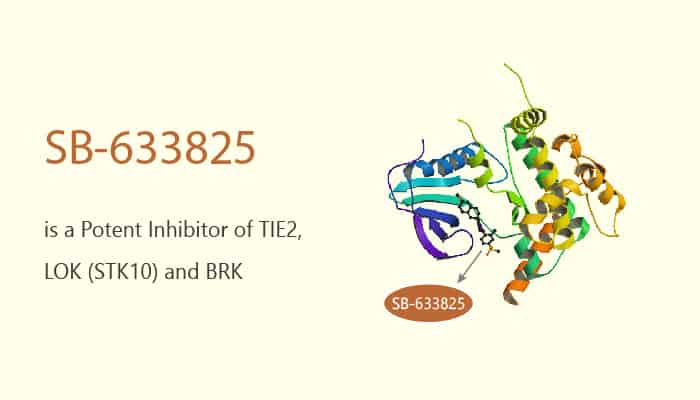Protein kinase is a kind of kinase and can modify other proteins (phosphorylation) by adding other phosphorylation groups. Specifically, phosphorylation usually changes the function of target protein (substrate) by changing enzyme activity, cell location, or association with other proteins. Besides, protein kinases have become a rich source of drug discovery targets. There are more than 25 FDA approved therapies with Protein kinases. The angiopoietin (Ang)/Tie2 kinase signaling pathway is a pivotal angiogenic signaling axis in endothelial cells. Moreover, the Ang/Tie2 kinase signaling pathway is an attractive anti-vascular target. A lymphocyte-oriented kinase (LOK; STK10) as the dominant ERM kinase in hematopoietic cells. LOK displayed preferential specificity for moesin compared to traditional basophilic kinase substrates. Furthermore, protein tyrosine kinase 6 (PTK6; BRK) expresses in breast cancers and emerging as an oncogene that promotes tumor cell proliferation, migration, and evasion. SB-633825 is a potent and ATP-competitive inhibitor of TIE2, LOK (STK10), and BRK.

But, how does BRD3308 work on the target? Let’s discuss it in detail. In the beginning, SB-633825 profiled as a potent inhibitor of LOK in addition to its original target TIE2. In addition, SB-633825 served as a starting point for the generation of a selective inhibitor of the LOK and SLK kinases. Meanwhile, SB-633825 inhibits TIE2, LOK, and BRK with IC50s of 3.5 nM, 66 nM, 150 nM, respectively. Nonetheless, SB-633825 can inhibit cancer cell growth and angiogenesis. Finally, SB-633825 inhibits LOK to 44% maximal activity and TIE2 to 75% maximal activity at 0.1 µM. SB-633825 has a relatively clean inhibition profile. The structures confirmed the ATP-competitive binding mode of SB-633825. All in all, SB-633825 is a potent and ATP-competitive inhibitor of TIE2, LOK (STK10) and BRK.
References:
Elkins JM, et al. Nat Biotechnol. 2016 Jan;34(1):95-103.